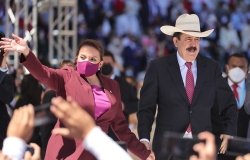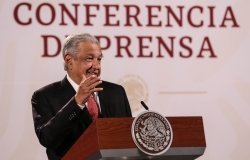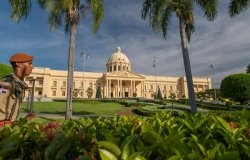
A blog of the Latin America Program
Belt and Road: Tight squeeze
By now, it is clear that Argentine President Maurcio Macri has no plans to distance Argentina from Beijing.
Before taking office in late 2015, Mr. Macri criticized former President Cristina Fernández de Kirchner for cozy deals with China – contracts he maligned as nontransparent. China’s chief geopolitical rival, the United States, was Argentina’s natural partner, Mr. Macri suggested. But in office, he underwent a swift transition, recognizing both the limits to U.S. assistance and the bottomless resources China has made available for financing infrastructure in Latin America.
That financing is even more important now, as Argentina’s International Monetary Fund bailout restricts capital spending. Even Argentina’s PPPs (public-private partnerships) might depend upon China’s participation, as high interest rates and corruption discourage Western investors. Then there’s the possibility of Argentina expanding its CFK-era local currency swap with China – an opportunity to grow gross reserves by $9 billion that Argentina’s new central bank president, Guido Sandleris, was reportedly pursuing on a recent trip to Beijing.
Though Mr. Macri has taken a consistently hard line with Venezuela over its repression of dissent, he has said little about President Xi Jinping’s notorious human rights abuses, ranging from political prisoners to the arbitrary detention of Uighurs.
Fortunately for Mr. Macri, so far, there has been no serious diplomatic cost to Argentina’s closeness to Beijing, though the State Department has privately communicated its discomfort. But now, as both Mr. Xi and President Trump head to Buenos Aires for the G-20 leaders’ summit later this month, Mr. Macri finds himself walking a “geopolitical tightrope,” as Alejo Czerwonko, an Argentina analyst at UBS, said in recent remarks at the Wilson Center. Mr. Macri plans a bilateral meeting with Mr. Xi that might include an announcement to join China’s Belt and Road Initiative. At the same time, the White House is bickering with China on many fronts, from an intensifying trade war to accusations of Chinese meddling in U.S. elections.
More to the point, the United States has made it clear that it expects its allies, particularly in Latin America, to shun China. In August, following El Salvador’s establishment of diplomatic relations with China, the White House excoriated San Salvador, and later pulled its chiefs of mission from El Salvador, Costa Rica and Panama, which had all recently severed ties with Taiwan. Before Rex Tillerson left for his first Latin America trip, in February, he warned the region that “Latin America does not need new imperial powers.” Last month, Mr. Tillerson’s replacement, Secretary of State Mike Pompeo, adopted a similar tone in remarks to reporters en route to Panama, describing Chinese investment in Latin America as “predatory economic activity.”
It’s possible Argentina will retain its immunity. As host of the G-20, Mr. Macri will be forgiven from warmly welcoming all leaders, including Mr. Xi. Given Argentina’s economic troubles, the U.S. government will recognize Argentina’s beggars-can’t-be-choosers predicament. Moreover, Mr. Trump himself plans to meet with Mr. Xi in Buenos Aires and in the past, their encounters have been oddly chummy. But then again, the United States has maintained diplomatic relations with Beijing since 1979, and it is still threatening to punish others who do the same.
Nuclear: Megainvestment in megawatts
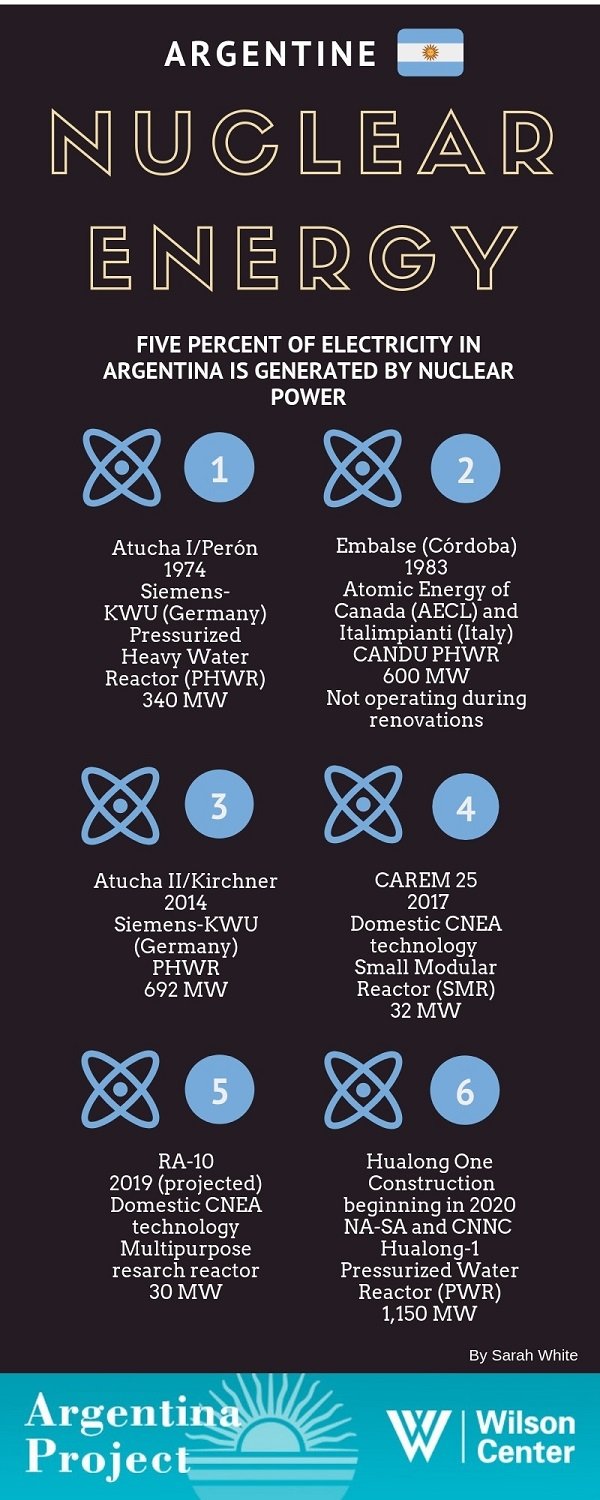
Sarah White
Blood feud: América para la humanidad
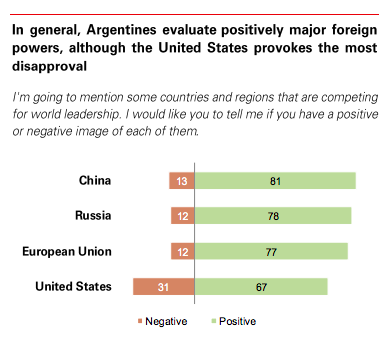
LAP
President Trump’s Buenos Aires visit – the second trip to Argentina by a U.S. president in the last three years – is another sign of the durability of the renewed diplomatic relationship. Former President Barack Obama relaunched diplomatic ties shortly after Mr. Macri’s election. In his historic visit to Argentina in 2016, he praised his counterpart and promised that “the United States stands ready to work with Argentina through this historic transition in any way that we can.” President Trump has largely shouldered that promise, especially during Argentina’s currency crisis earlier this year, when the U.S. Treasury Department helped Mr. Macri secure the largest-ever International Monetary Fund bailout.
None of that guarantees Mr. Trump a hero’s welcome in Buenos Aires next month at the G-20. The U.S. president is widely disliked in Argentina, as multiple surveys, including our own ArgentinaPulse, have found. Last year, for example, Pew reported that only 13 percent of Argentines had confidence in Mr. Trump’s foreign policy.
Mr. Trump’s “America First” style helps explain his low standing. After all, 40 percent of Argentines had confidence in Mr. Obama’s foreign policy. But the truth is that any U.S. president faces an uphill climb in winning over Argentines. That is especially true since the “carnal relations” and “automatic alignment” of the Menem era culminated in the 2001 economic conflagration. True, the Kirchners luxuriated in anti-Americanism, especially Ms. Fernández de Kirchner. But Ipsos polling shows that support for the United States had already collapsed – falling from 66 percent in 1991 to 30 percent in 2003 – by Néstor Kirchner’s first year in office.
Indeed, the testy ties between Argentina and the United States long predate even Juan Perón, who famously thanked the U.S. ambassador, Spruille Braden, for opposing his presidential candidacy in 1946. (“If I carry two-thirds of the electorate, I shall owe one-third to Braden,” he said.) In fact, Argentina has chafed at U.S. hemispheric dominance since as early as 1889, when a future Argentine president, Roque Sáenz Peña, spoke at the first Pan-American Conference in Washington and condemned U.S. plans for economic integration in Latin America.
In his speech, Mr. Sáenz Peña said Argentina and the United States “nos conocemos poco” because of the vast distance. He also questioned U.S. motives in Latin America, where most countries had only recently gained their independence and were not eager to swap European domination for U.S. control. “Recién nos despedimos de la corona Española,” he said. He closed with a “declaración personalísima” that would become a slogan for the resistance to U.S. influence, and a concise riposte to the Monroe Doctrine: ¡Sea la América para la humanidad!
(In)efficiency: Haste makes waste
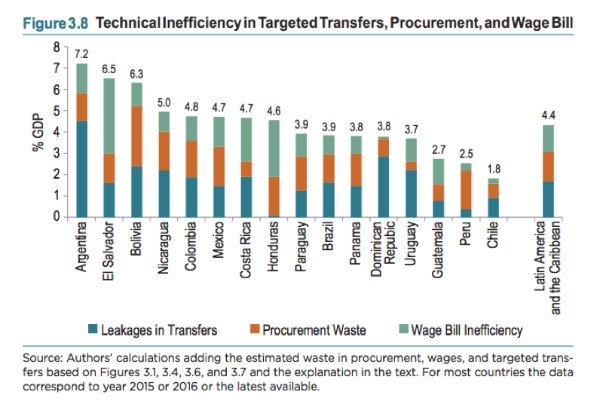
LAP
As Argentina’s government, under the watchful eye of the IMF, rapidly closes its budget deficit, public spending is coming under increased scrutiny. Though the IMF’s $56 billion bailout preserves social spending, cuts to popular subsidies – such as steeply discounted natural gas and bus and subway fares – put surviving public programs under a microscope. The presidential campaign only adds to the scrutiny.
In this environment, a recent report from the Inter-American Development Bank, which offered an unflattering view of the quality of Argentina’s public administration, must have frustrated the Casa Rosada. Its findings: Thanks to inefficiencies in government spending, Argentina squanders 7 percent of GDP. That is the highest level in the region, and nearly double the regional average of 4 percent (see chart above). The IDB analysis reflects spending on government procurement, salaries and transfers.
The findings contrast with the self-image of President Mauricio Macri’s government, which sells itself as a transparent and technocratic alternative to its corrupt and spendthrift predecessors. But it should come as no surprise, given the massive expansion of the state under the last two Peronist presidents, Mr. Kirchner and Ms. Fernández de Kirchner. During Ms. Fernández de Kirchner’s two terms alone, spending on wages, pensions and energy subsidies increased by 11 percent of GDP. By the time Mr. Macri took office, public spending in Argentina was the highest in Latin America.
Even before the IDB report, it was clear the quality of Argentina’s public services did not reflect those steep spending increases. Take government procurement, which represents 15 percent of total spending in Argentina. It is enough to look at the “cuadernos” scandal to lose confidence in the efficiency of government procurement, even without studying the quality of infrastructure. Then there is the cost of the country’s massive public workforce, the largest component of government spending in Argentina. From the 2001 crisis to 2014, the number of public sector workers exploded, rising from 2.3 million to 3.9 million. To be fair, some of that expansion reflected nationalizations of enterprises that had been privatized in the Menem era. But in general, the higher spending has not bought Argentina an efficient bureaucracy; in fact, the IDB report notes that subnational government offices are frequently overstaffed, or peopled by ghost workers.
Finally, the report highlights Argentina’s wasteful energy subsidies – a well-known fiscal burden that originated as emergency measures during the 2001 economic collapse and continues to siphon public resources.
In the long-term, the report should help Argentina focus on improving its public institutions. As for whether it ruffled feathers in the government, Argentine leaders will be in a forgiving mood. After all, Argentina was the IDB’s second biggest borrower, after Mexico, in 2016 ($1.5 billion), and its top borrower last year ($2.4 billion). It was on track to overtake Brazil as the IDB’s largest debtor, and that was before the IDB tossed in $2.5 billion to the IMF’s Argentina bailout.
Related Programs

Latin America Program
The Wilson Center’s prestigious Latin America Program provides non-partisan expertise to a broad community of decision makers in the United States and Latin America on critical policy issues facing the Hemisphere. The Program provides insightful and actionable research for policymakers, private sector leaders, journalists, and public intellectuals in the United States and Latin America. To bridge the gap between scholarship and policy action, it fosters new inquiry, sponsors high-level public and private meetings among multiple stakeholders, and explores policy options to improve outcomes for citizens throughout the Americas. Drawing on the Wilson Center’s strength as the nation’s key non-partisan policy forum, the Program serves as a trusted source of analysis and a vital point of contact between the worlds of scholarship and action. Read more

Argentina Project
The Argentina Project is the premier institution for policy-relevant research on politics and economics in Argentina. Read more
